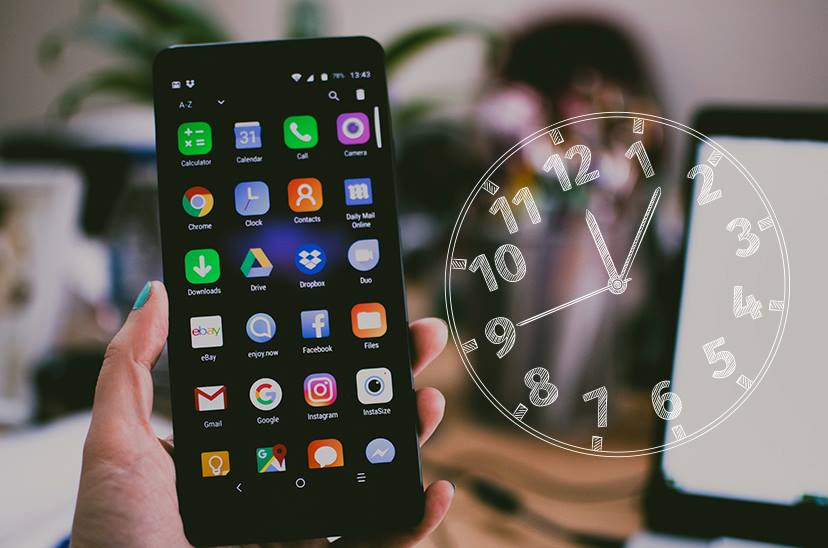 With a large number of apps accessible on most favorable online stores, development time plays an essential role in getting the app to the market before the competition. Therefore, a common question that app developers learn from their clients is. ‘How much time will it take to build an app?’.
With a large number of apps accessible on most favorable online stores, development time plays an essential role in getting the app to the market before the competition. Therefore, a common question that app developers learn from their clients is. ‘How much time will it take to build an app?’.
The standard answer would be about 4 to 5 months. However, there’s no straightforward reply to this question as diverse factors affect the app design process. Today, we highlight the multiple steps in the app development process so that organizations and start-ups get a reliable idea about the numerous factors that influence the app development time.
One of the ideas that it’s important to understand about the development timeframe is that robust apps are based on an innovative approach, and time to market is a significant factor for helping the app gain first mover benefit.
The scope of the app
In general, a small app will take limited time to develop than a big one. Therefore, the initial step in trying to decide how long does it take to make an app is to outline the range of the app at the first stage to dodge having to go back later to combine additional features. The best way to determine the scope is to analyze the requirements of the target audience, determine whether any other apps are offering the similar service as well as assess whether there is a demand for what the app provides. Besides this, one should analyze whether any other apps in the market offer the same solution. If so, it’s essential to have clarity on what will be different in the new app.
Functions & Features
How much time does it take to design and develop an app? It all depends on the number of functions and features that it offers to users. Usually, one determines if there is a strong market demand for the solution that the app provides. The next step is to outline the app’s method of operation. Besides deciding on its capabilities, the tasks it performs and the extent of its functions and features, one will need to define how it will source and manage data.
To determine the app design time, often at this stage, a storyboard is created to present a more explicit visual representation of the user interface as well as the connections between the various screens. The more functions and features that an app has the longer it will take to design. One also needs to determine at this stage the number of operating systems on which the app will be available for download. The reason for this is that developing for two or more platforms will take longer than for just one. Additionally, Android apps take slightly longer to develop than those for the iOS platform. This is because there are several types of Android devices, and the developer needs to ensure that the app is optimized across all Android devices.
On average, for a small app, the scoping process, including determining the functions and features, might range from 1-2 weeks. An additional week might be required for a medium-sized app, whereas a big project will need around 3-4 weeks for the scoping and requirement gathering to be completed.
Design & Development
This is a crucial stage during which the developers need to determine the feasibility of the app in terms of whether the front-end design and the back-end systems are compatible. Therefore, the designers, as well as the coders, will need to work together to ensure that a robust back-end solution back the visual front-end design.
Simply put, the front-end design and development takes care of aspects such as wireframing, UI design and development, and caching, whereas the back-end looks after data integration, data storage, versioning, and user management, among other details. All these need coding to help with computing the results that are displayed on the front-end UI.
As is evident, for the app to integrate seamlessly at the front-end and back-end, the designers and coders should communicate with each other continuously. Otherwise, there would be delays due to having to go back and rework features that don’t work as they are expected to on the front end.
So, how long does it take to create an app? Once again, it depends on the size and features of the app. On average, app design time may lie between 2 to 3 weeks for a simple app and can extend up to 9 to 10 weeks for a complex app with several features.
Testing
Once the UI design and development are completed, the app needs to be tested to ensure that it is free of bugs before it can be launched on the app stores. Primarily, the development team examines the app while it is being built by continuously identifying errors in the code and rectifying it, but this type of testing, which is known as alpha testing, is insufficient before the app gets to the market. Besides internal testing, beta testing needs to be carried out to detect if there are any glitches that everyday users might face when they download and use the app.
It’s essential to find a set of users who represent the apps target audience before beta testing is carried out. Since most of the flaws might have been liquidated during the method of alpha testing, beta testing should not take too long. In general, it can take around 3 weeks to a month for beta testing to finish as it might take a few iterations of debugging and retesting before all the flaws are removed.
How long does it take to prepare an app to launch in the market?
As outlined above, the method of developing an app comprises four broad steps, which collectively can take around 2 months for a simple app that doesn’t allow too many features to about four and a half months for a big app that has multiple functions and features. Once again, bear in mind that this is a rough approximation and can fluctuate significantly based on the skills of the team, the way of operation and the time spent in testing.
For example, if significant time is not used on internal or alpha testing, then a lot of time will be dissipated in going back to the board to rework development processes to assure that the app functions the way it is expected. Additionally, if further issues are detected once the development process is completed, the coders will need to rework the back-end to rectify the flaws.
Contributed byhttps://www.code-brew.com/







